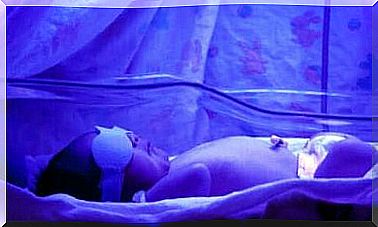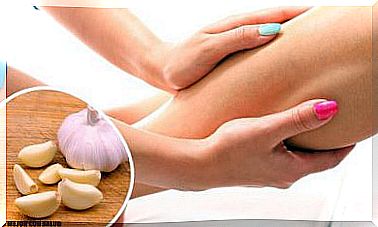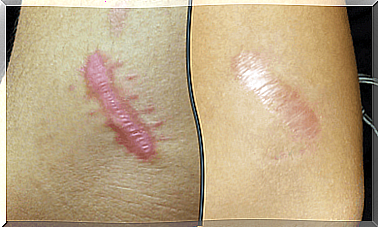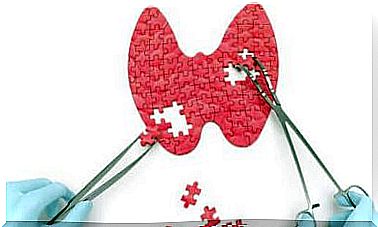Chondromalacia Patellae: Characteristics And Treatment
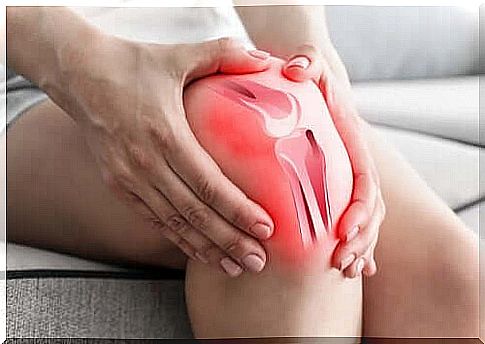
Chondromalacia patellae, the softening of the kneecap, is one of the most common knee conditions. Keep in mind that this joint is very prone to injury as the knees support most of the human body weight.
In addition, there are other risk factors for the development of this condition such as age, overweight, activity level, and so on. Remember that chondromalacia patellae is a relatively common condition in young adults. There is a higher incidence among young people who play sports such as:
- football
- basketball
- volley-ball
- tennis
- cycling
- karate
- rowing
- rugby
- athletics
- ballet
- Mountain climbers
There is much debate about the use of the term chondromalacia patellae. The first word refers to the softening of the cartilage of the knee. However, it was increasingly used as a diagnosis for someone who has pain in that joint without any cartilage problems.
Currently, the scientific community thinks it is more accurate to speak of patellofemoral syndrome and not chondromalacia patellae as long as the exact cause of knee pain is unknown. However, the term is both medical and widely accepted.
What are chondromalacia patellae?
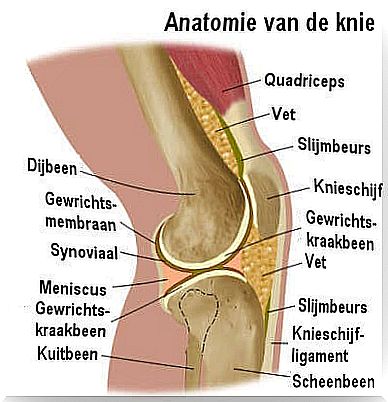
The patella is a flat bone at the front of the knee. The plural of this word is patellae. It supports the thigh bone and its main function is to protect and facilitate movement of the joint. Chondromalacia patellae is a degenerative condition that affects the cartilage that forms on the articular surface of the patellae.
When this condition occurs, the bone is exposed to direct friction from the movement of the joint. In most cases, this is due to the softening of the cartilage, causing pain in the front of the knee.
Cartilage acts as a shock absorber in the joints. It consists of 90% water and 10% cells. This makes it resistant to the energy of shocks. If there is chondromalacia patellae, it is because the structure of the cartilage has changed. So it is no longer smooth and becomes rough and gray.
The cartilage then becomes thinner and more irregular. Sometimes cracks and even fractures occur in the patella. In those cases, the knee usually makes a distinctive noise when performing certain movements. There may also be severe pain.
Causes
The main cause of chondromalacia patellae is the repeated occurrence of trauma to the knee. In other words, certain movements generate compression of the cartilage. This is why athletes are more likely to suffer from this condition. However, the problem can also be due to other factors such as:
- anatomical problems of knee misalignment or poor positioning of the kneecap.
- very hard blows to the knee. This can happen when someone falls on their bent knee, bumps into a hard object, or is involved in a traffic accident.
- insufficient movement due to an abnormality in the feet or legs, or from wearing high heels.
- a previous dislocation of the knee or a fracture.
- being overweight.
- muscle atrophy or muscle weakness.
- an inequality in the length of the legs.
- a severe curvature of the spine (scoliosis).
Characteristics of chondromalacia patellae

Usually there is pain during physical activity. The pain increases if the patient runs on a hard surface or goes up and down stairs. Many patients experience a feeling of stiffness when they remain in a position that requires the knees to remain bent for a long time.
When bending the knee, the characteristic clicking of chondromalacia patellae often occurs. Over time, this deviation affects the strength of the leg muscles and walking. Different levels of severity are distinguished in this condition:
- First grade. The cartilage becomes softer and there is also edema.
- Second degree. X-rays show that the cartilage is fibrillating. It then appears as if it is ‘frayed’.
- Third degree. The cartilage shows fissures, some of which are very pronounced and also reach the deeper layers.
- Fourth degree. There are both deep grooves and loose pieces of cartilage.
- Fifth degree. At this stage there is talk of eburn. That is, there is a pathological increase in the density of the cartilage. This is due to the exacerbation of ulceration (gap formation), which eventually affects the subchondral bone.
Usually conservative treatment is first applied to treat chondromalacia patella. If this produces no or insufficient results, surgery is necessary.
